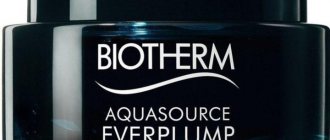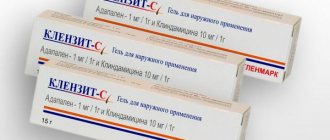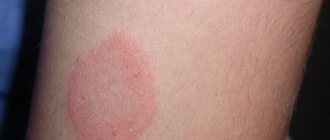This alcohol solution, sold in any pharmacy without a prescription for literally pennies ($0.1), is found in almost every home. This is a good alternative to medical alcohol; it eliminates itching and rashes on the body, and is good if you need to disinfect and disinfect damaged skin. But it has found its application not only in dermatology.
Recently, salicylic acid has been increasingly used to eliminate various cosmetic imperfections. Moreover, for this purpose you can buy not only medications, but also branded cosmetics. And salons offer a highly effective and very popular peeling procedure based on it. What has this product done to deserve such attention?
Instructions for use
Salicylic alcohol is an affordable and effective remedy for eliminating skin problems.
The product is often used in the fight against acne and pimples.
An alcohol solution of salicylic acid has excellent antiseptic, antibacterial, antifungal and anti-inflammatory properties, but it costs a penny and is sold in every pharmacy.
Composition and release form
Salicylic alcohol is a mixture of ethyl alcohol and salicylic acid in varying concentrations. Salicylic acid was first obtained from the bark of willow trees and was used to treat rheumatism. After some time, it began to be used to treat external rashes caused by the activity of microbes and bacteria.
This acid belongs to the class of aromatic acids that have a pronounced vasoconstrictor effect, bactericidal and disinfectant properties. Salicylic alcohol is used exclusively externally to treat the affected surface, and it performs the following functions:
- disinfects the skin;
- dries out pimples and blackheads;
- relieves inflammation;
- destroys pathogenic bacteria and fungi;
- constricts blood vessels at the site of application.
The alcohol solution is available in dark glass bottles of 24 and 40 ml. Depending on the concentration of the active ingredients, 1% and 2% alcohol are distinguished.
Note! To combat acne and acne, use only 1% and 2% alcohol, since a more concentrated solution can cause deep burns and injure the skin.
When is it used?
Salicylic alcohol is used primarily to combat acne and acne, but in some cases it can be used for other skin diseases that require disinfection of the affected area (as part of a combination treatment). Indications for prescribing the drug are:
- fungal diseases of the feet;
- eczema;
- bacterial and fungal dermatitis;
- lichen;
- psoriasis;
- calluses and corns;
Sometimes used for warts, but there are much more effective remedies.
The solution must be used very carefully. It is recommended to start using 1% alcohol, as intolerance reactions are possible.
How to use?
Salicylic alcohol is used only for local treatment of the diseased area. Most often, spot application is used with a cotton swab (if we are talking about small lesions, for example, warts or pimples).
Apply the composition to the skin once a day. If the skin is sensitive, for example on the face, then it is better to apply every other day. Treatment should not last more than 14 days.
When removing calluses and corns, you need to apply the drug 3-4 times a day. In this case, once a day you need to steam your feet in hot water and treat calluses with a pumice stone or a special tool.
Important! It is not recommended to apply the composition to healthy skin, as there is a high probability of damage to uninfected tissues as a result of a burn .
When treating skin fungus, salicylic alcohol is sometimes prescribed as an adjuvant - it softens the skin and promotes better penetration of antifungal ointments.
Contraindications
Salicylic alcohol should not be used on areas of the skin with a large affected area, as well as in cases of increased dryness or hypersensitivity reactions to ethanol or salicylic acid.
Pregnancy and lactation
An alcohol solution of salicylic acid does not pass into breast milk and is not absorbed into the general bloodstream, so it cannot harm the fetus or child. According to indications, the drug can be used during the specified periods.
Overdose
When used locally, no cases of overdose have been recorded. However, you should take precautions: the bottle with the composition should be placed on a flat, hard surface to prevent it from tipping over onto open areas of the body. If, nevertheless, an unpleasant situation occurs and a large amount of the solution ends up on the skin, you should immediately rinse the area of contact with running water and apply a medicinal ointment. After providing first aid, contact a specialist.
Side effects
Since the solution contains alcohol, local skin reactions may occur, indicating irritation. These include:
- severe redness (the skin takes on a bright red or burgundy hue);
- burning;
- peeling and increased dryness;
- skin tightness (facial movements cause discomfort).
These phenomena are not a reason to cancel treatment in cases where they are mild or moderate in severity and also disappear after 1-2 days. If this does not happen, use of the product should be discontinued.
Storage
Unlike most medicines, which are stored at a temperature not exceeding 25 degrees, salicylic alcohol should be stored in the range from 10 to 18 degrees. It is necessary to strictly ensure that children and pets do not have access to the storage area. Shelf life – 3 years.
Other types
Alcohol "Alpha" and luxury alcohol are used to make luxury drinks and their price is quite high. They are the highest quality product among alcohols.
Alcohol “Basis” and “Extra” are lower in quality and price. Vodka products are also made on their basis, but the price is lower than the previous two types.
Ant tincture is used in pharmacology as an antiseptic. Theoretically, it can be drunk, but primarily it is used for medicinal purposes and does not have the same degree of purification as alcohols for the production of vodka.
Industrial alcohols are not intended for consumption; they contain dangerous components that lead to poisoning. Used only in enterprises.
Hydrolysis alcohol, unlike other alcohols, is made from sawdust and wood processing waste. It can only be used for technical needs. When used internally it causes severe poisoning. Its taste can be recognized by its characteristic salty taste or chemical bitterness.
Cetyl alcohol is used only in cosmetology. It has a high fat content. Although it is the most gentle for the human body, you cannot drink it even with a strong desire.
Salicylic alcohol is made from salicylic acid and ethyl alcohol. First of all, it is used for medical purposes to treat the skin for various diseases. It is also used in cosmetology, for example, salicylic alcohol is included in chemical peeling. May cause poisoning if taken orally.
Aviation alcohol, as the name implies, is used in the operation of aircraft. You can’t drink it, because of the high content of metals, death from poisoning occurs very quickly.
Read also: How often can you drip heptral
Properties of the drug
Salicylic alcohol is a solution of ethyl alcohol and salicylic acid.
Salicylic solution has an anti-inflammatory effect. Disinfects the skin and helps cleanse contaminated pores. When a pimple appears, use an alcohol solution of salicylic acid to get rid of redness and rash. Beneficial features:
- Skin disinfection, the drug is suitable for the face.
- Drying, with increased oily skin.
- Rapid reduction of the inflammatory process.
- Reducing the number and size of acne, getting rid of papules and pustules.
How to use correctly
Salicylic alcohol is an over-the-counter drug. The box contains a bottle of solution and instructions. Before using the product, study the methods of use and contraindications. Especially for using an alcohol solution on the skin of the face.
Pimples, redness, and oily sheen on the skin are reasons to use a salicylic solution. It is advisable to study the recommendations of specialists and follow them. For example, you cannot apply the product to the entire face; salicylic solution should not be used on healthy skin. Alcohol can burn healthy skin. Apply following the instructions directly to the pimple.
When purchasing, pay attention to the percentages. If alcohol is used for the first time, then start with the 1% version. Does not injure the skin. Then they switch to the 2% product. Pharmacists will not offer 5-10% salicylic acid for use on the face. An alcohol solution in such a concentration will lead to burns and damage to the deep layers of the epithelium. Skin restoration will be long and difficult.
Apply the product carefully, pointwise to the inflamed element without rubbing into the skin. The pimple goes away after lightly blotting it with a cotton swab dipped in the solution.
Salicylic alcohol, as doctors say, is not used together with drugs that lead to dry skin.
Do not use simultaneously with:
- Lotions
- Scrubs
- Drying ointments, gels.
The combination of these products with a salicylic solution leads to dryness, irritation, itching and other troubles.
What to replace it with?
If for some reason the acid cannot be used against lichen, then its main analogue is salicylic ointment, which is used to get rid of dermatological infections and is available in concentrations of 2%, 5%, 10% and 60%. The following ointments are full-fledged analogues, used instead of acid: salicylic-sulfur and sulfur-tar ointment - each of them contains salicylic acid, but in a lower concentration. Sometimes boric acid is prescribed for treatment, but with caution, because its antiseptic effect is strong and sometimes it greatly dries out damaged areas on the body.
Preparations based on salicylic acid
Salicylic acid is not only sold in alcohol solution. Pharmacies offer:
- Ointments
- Lotions (alcohol-free)
- Pastes
- Powders
- Special impregnated plasters
They are no less effective and are used in situations where salicylic alcohol cannot be used. For example, for sensitive dry skin, choose an alcohol-free lotion made on the basis of salicylic acid. Moisturizes the skin without compromising its integrity.
An ointment based on salicylic acid is applied to the skin and does not cause burns. The product relieves inflammation and heals the skin.
Sometimes powders with salicylic acid are used. Opponents of this form of release believe that the talc contained in the powder clogs the pores.
Preparing an acne remedy
Ingredients in the recipe:
- Salicylic sleep 1% – 45 ml;
- Boric alcohol – 25 ml;
- Levomycetin – 2 or 4 tablets.
Pour salicylic and boric alcohol into a dark vessel, add crushed chloramphenicol tablets and mix. Two tablets of chloramphenicol are used in case of mild skin rashes; if acne worsens, then 4 tablets are added to the composition. Apply the product at night after cleansing the face, shake the prepared composition before each use. Wipe your face with a cotton swab containing the solution.
The mash contains an antibiotic, so the acne remedy is used for no more than 3 months during periods of exacerbation. The composition is contraindicated for sensitive and dry skin. Before using any antibiotics, consult a doctor.
Video: preparing lotion for problem skin.
Salicylic acid is an energetic substance that is isolated from willow bark. The drug is available in the form of an aqueous and alcoholic solution, in powder for preparing a solution and as an ointment. It has local irritant, antiseptic and keratolytic effects. Used to treat skin diseases, as part of anti-callus patches and powders.
You will need
- - salicylic acid solution;
- - salicylic acid powder;
- - distilled water;
- - cotton pad;
- - textile;
- - plastic bag;
- - rubber cap.
Instructions
1. Use salicylic acid for skin diseases accompanied by weeping and non-healing wounds, blisters, and to treat abscesses. You can use an alcohol or aqueous solution. You can prepare the drug in distilled water yourself by dissolving 1 gram in 100 ml of water.
2. Salicylic acid is used for gout, rheumatic pain, arthrosis, arthritis, because it has an irritating effect and a slight anti-inflammatory effect. Rub problem areas with an alcohol solution 3-4 times a day. You can make compresses with an alcohol solution. To do this, moisten the cloth richly, apply it to the painful joints, and cover with cellophane on top. This compress works best if used at night.
3. If you have problematic skin with enlarged pores, acne, inflammation, pigmentation, rashes, wipe the skin with a cotton pad soaked in an alcohol solution of salicylic acid. If your skin is prone to dryness, use an aqueous solution for treatment. Daily use of the drug 2 times a day after washing can significantly reduce pores and remove excess sebum.
4. The use of salicylic acid to treat burns can significantly reduce their healing time and prevent infection. If you have excessive sweating, then using an aqueous solution of salicylic acid will help to significantly reduce it and prevent the occurrence of sweat odor even without the use of deodorants.
5. Salicylic acid can be used for hair loss associated with thick seborrhea, eczema, pityriasis versicolor. To use, apply the solution to the roots, tie it with a plastic bag or put on a rubber cap, and after 30 minutes, thoroughly rinse your hair with water.
6. Do not use salicylic acid during pregnancy and breastfeeding, as well as with functional liver and kidney diseases.
Salicylic acid was derived and synthesized from willow bark by Italian chemist Rafael Piria. This acid and its derivatives have anti-inflammatory and antibacterial properties. Salicylic acid is a widely available and effective remedy against acne and lightens acne spots. The acid is widely used for cosmetic purposes. Salicylic acid softens the top layer of skin and fat plugs in the follicles, has an exfoliating effect, and prevents clogging of pores and the occurrence of comedones.
Instructions
1. When caring for and treating problem skin, other substances are often added to salicylic acid to increase performance. The use of salicylic acid in combination with glycolic acid gently whitens the skin, helping to reduce pigmentation at the site of acne, and relieves inflammation. The combination of these products gives the result of peeling, miraculously helps get rid of acne and remove excess sebum.
2. Salicylic acid is available in every pharmacy, in the form of a 1-2% solution or dry powder (it is dissolved in alcohol or oil). Higher acid saturation is no longer used in treatment, as this can lead to serious skin burns. Salicylic acid is also included in many cosmetic products for the care of problem skin. To treat acne, salicylic acid is applied pointwise to inflamed areas of the skin. It is not recommended to wipe your entire face with acid. Before using salicylic acid, the skin should be cleansed of excess sebum.
3. When treating your skin with salicylic acid, do not use products that dry out your skin: salicylic acid can worsen dryness, cause irritation or burns. Do not use an alcoholic acid solution to treat each facial skin; apply it pointwise to problem areas. You can replace the alcoholic acid solution with cosmetic products that contain it. The additional components of these products have a softening effect on the skin of the face, prevent burns and prevent an overdose of salicylic acid. A properly selected set of products based on salicylic acid will help cope with increased sebaceous glands and provide thorough care for problem skin.
Characteristics of salicylic alcohol
This remedy is effectively used for local infections of the subcutaneous tissue, as well as skin of various etiologies (syndrome of staphylococcal skin lesions, which look like blisters, similar to a burn). Salicylic alcohol is an antifungal dermatotropic drug for external use. The main active ingredient of this product is orthohydroxybenzoic acid, which is colorless, small white crystals, odorless and soluble in hot water, ether or alcohol. This substance is found in significant quantities in salicin (poplar and weeping willow bark) and is often used as an antipyretic.
Contraindications and side effects
Iodine-containing products prepared at home have virtually no contraindications and kill fungus well . The only exception is individual intolerance to the active substances of iodine. Negative reactions from its use can be expressed in the form of allergic sensitivity, urticaria, acne, soft tissue burns.
Pregnant and breastfeeding women should use iodine prescriptions with caution, after consulting with their doctor.
Any treatment requires a competent approach and precise dosage control. Only the attending physician can give a qualified recommendation regarding iodine therapy for fungus, based on the clinical picture of the disease.
Scope of use of the drug
Salicylic alcohol (like all external agents) is applied directly to the affected area of the skin. It is recommended to use it for common acne, various infectious skin lesions (ichthyosis, chronic eczema, psoriasis, dyskeratosis), calluses, contact dermatitis and warts. It is also used for burns and skin diseases such as excessive sweating. Alcohol should be applied to the affected surface using a cotton swab or disk 2 to 3 times during the day. This product can be used as the main one, and also as one of the components in complex treatment. An alcohol solution of this acid has a wonderful exfoliating effect. It helps soften the upper layers of the skin, as well as fatty plugs in the pores and follicles, thereby preventing the formation of comedones. It must be remembered that the product is addictive, therefore, after 2 months of use, you need to take a break (quite 2 weeks). This product should not be used by people who are hypersensitive to its components. The fame of the drug is due not only to its high performance, but also to its accessibility and lack of age restrictions. During pregnancy and lactation, it is also allowed to use salicylic alcohol with virtually no restrictions. Side effects are observed very rarely and are expressed by local reactions in the form of mild burning and itching. Sometimes skin rashes are observed, which disappear immediately after stopping the use of the drug. This drug does not lose its healing properties for 3 years if it is stored correctly (in a tightly sealed container, in a dark place at a temperature not exceeding 20oC).
Is it possible to cauterize ringworm?
The causative agent of this form of the disease is a pathogenic fungal microflora. The disease is considered contagious and can be transmitted from person to person. For treatment, experts prescribe drugs from the antifungal group.
Doctors allow treating affected areas of the body with an iodine solution containing 5% active substance. The drug exhibits high therapeutic results in the treatment of the initial stages of the disease. It is not recommended to apply to the hairy area.
If, within a few days after the start of treatment, the spots increase in size or other unpleasant symptoms appear, then such treatment is stopped. It is also not recommended to treat stains larger than 1 cm.
Therapy with alternation of iodine and brilliant green shows effectiveness. The patient is recommended to treat the affected areas, alternating medications every day. Before applying the products, wash the skin and remove the resulting scales.











